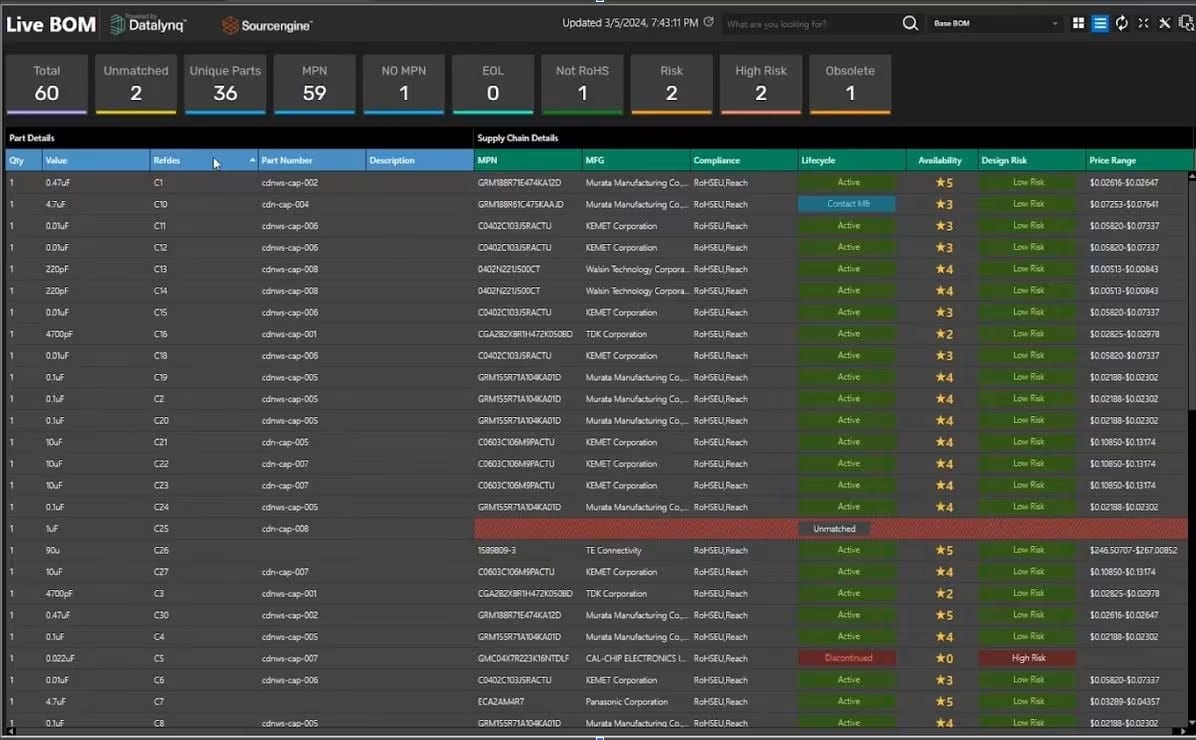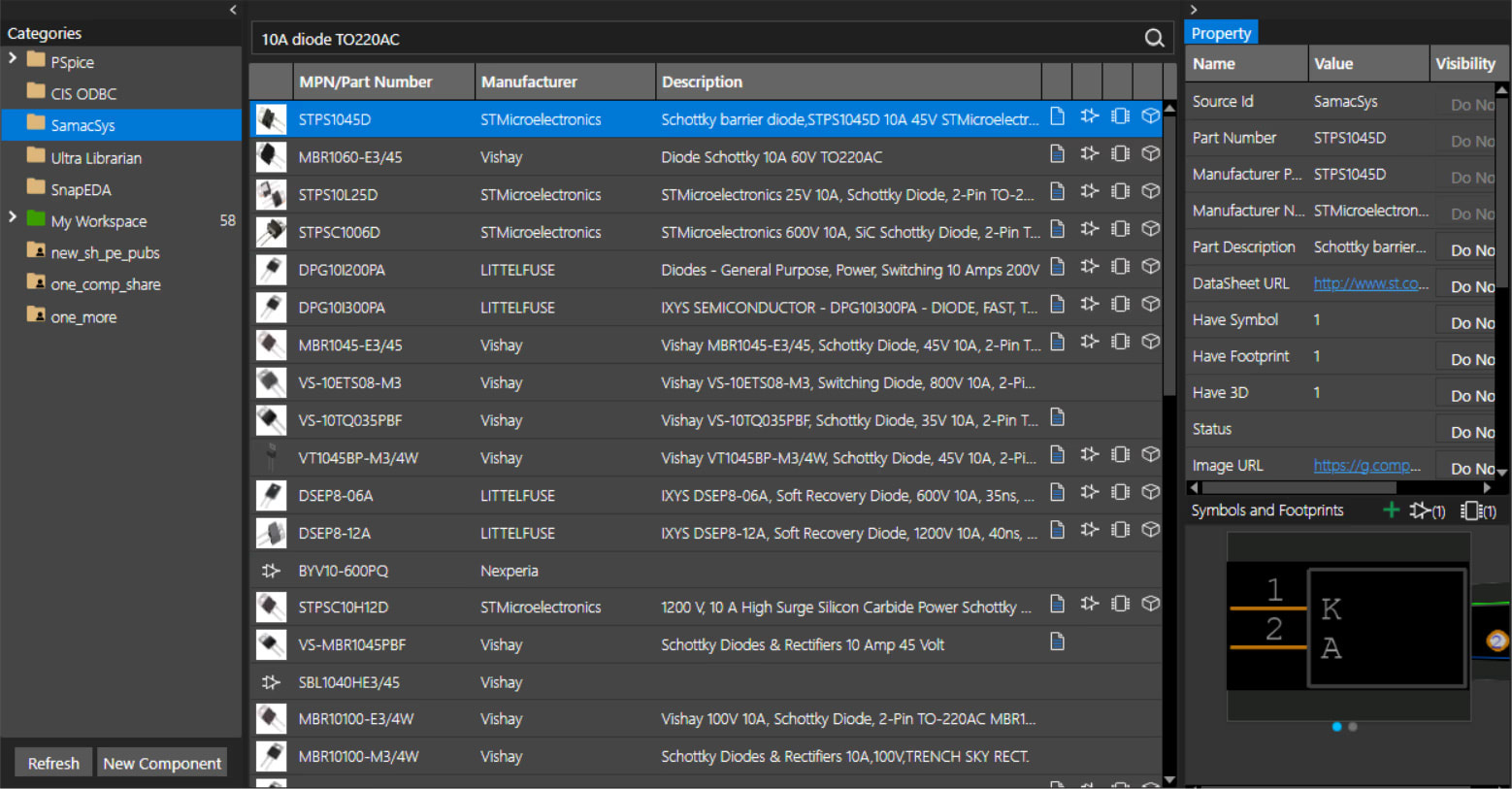What Is PDM?
Key Takeaways
- Product data management (PDM) refers to both an engineering process and a type of software.
- Many ECAD applications include some tools to help with PDM tasks.
- PDM is a part of product lifecycle management (PLM), and PLM software will help users perform PDM functions.

In the world of product development, Product Data Management (PDM) refers to both a critical business process and the software systems that enable it. For any manufactured product, from software to complex hardware, a huge amount of design data and documentation is generated. PDM provides the framework for managing this information. These data management tasks are a foundational component of the broader Product Lifecycle Management (PLM) strategy, which tracks a product from initial concept through design, production, distribution, and eventual retirement.
As an organization's product portfolio grows, its data management needs scale in complexity. If you're part of a growing hardware company, understanding what is a PDM system and how it fits into your workflow is essential for efficiency and success.
What Is a PDM System and How Does it Work?
Every physical product has data associated with it, ranging from front-end engineering documentation to volume production data. Knowing what is a PDM system helps clarify how organizations ensure the accessibility and integrity of this product data. While industries vary in their processes and requirements, the core goals of PDM remain consistent..
Core Functions of a Product Data Management (PDM) System
|
Core PDM Function |
Description |
|---|---|
|
Storage |
Store and catalog project files and parametric data in a structured, templatized manner. |
|
Naming |
Enforce a part, assembly, document, and revision numbering system. |
|
Revisioning |
Implement a version control system that tracks revisions to files. |
|
Sharing |
Share data as requested by internal and external stakeholders. |
|
Security |
Ensure data remains secure and protected against unauthorized access or loss. |
Whether it's an OEM, contract manufacturer, or design firm, companies use Product Data Management (PDM) systems to centralize and control product-related data, such as design files, BOMs, and version history. In electronics, PDM platforms help manage schematics, PCB layouts, component libraries, and design revisions across teams.
When PDM Gets More Complex
As electronic products become more advanced and teams become more cross-functional, companies outgrow basic, domain-specific PDM tools. They require a centralized, file-type-agnostic PDM system to manage diverse design data across departments.
Moving from Data Control to Lifecycle Management
Modern PDM isn't just about storing files—it's about managing the full lifecycle of every component and data object in a product. As product lines expand and engineering teams scale, companies often adopt PLM (Product Lifecycle Management) systems. These extend PDM by enforcing workflows, approvals, and structured processes that guide products from concept through production to retirement. This type of control is especially important in electronics, where products combine:
- Hardware component (PCBs, mechanical assemblies, enclosures)
- Software/application layer (embedded firmware, apps)
- Rich supporting documentation (assembly drawings, test reports, compliance files)
- Manufacturing, testing, and quality assurance data
All these types of product data can be tracked in a PLM system as part of a PDM process.
Key PDM Functions in a PLM System for Electronics
|
Function |
Description |
|---|---|
|
Assembly Data Tracking |
Tracks data across the full product hierarchy, from complete assemblies to individual components. |
|
System Integration |
Links component and product data with ERP, inventory, and other enterprise systems. |
|
Centralized Data Storage |
Stores hardware data, software artifacts, manufacturing files, documentation, and test results in one location. |
|
File System Enforcement |
Maintains consistency in file naming, structure, and documentation standards. |
|
Task & Change Management |
Assigns design tasks and tracks engineering change orders (ECOs) across development stages. |
|
Obsolescence Tracking |
Assigns lifecycle statuses to components and documentation to manage phase-out and replacements. |
Cadence Solutions for PDM and PLM
Cadence provides a scalable approach to data management, offering powerful PDM capabilities directly within the design environment and providing a clear path to enterprise-level PLM.
A key feature within Cadence’s PDM tools is the Live Bill of Materials (Live BOM), which offers real-time visibility into all components used in a design. Live BOM updates automatically as changes are made, ensuring teams across engineering, procurement, and manufacturing always work with the most current data.

OrCAD X Live BOM provides compliance lifecycle, status, market availability, and price.
PDM Features in OrCAD X
|
Feature |
Description |
|---|---|
|
OrCAD X OnCloud Data and Library Management |
OrCAD X OnCloud helps centralize design files and component libraries in the cloud. This creates a single source of truth, enabling teams to access, reuse, and collaborate on the most up-to-date verified data. |
|
Workspace Project Management |
The Workspace workflow provides inherent version tracking. Designers can publish updates with comments, define lifecycle states, or lock files. |
|
The data management tools manage critical component metadata, like part numbers, suppliers, and lifecycle status, within a centralized, queryable database. |
|
|
A real-time Bill of Materials that updates automatically with schematic changes. Live BOM supports sourcing insights and links to supply chain data for proactive component selection. |

OrCAD X Component Explorer
Understanding what is a PDM system reveals its role as the essential starting point for organized product development. For design-centric tasks, the powerful built-in PDM capabilities of Cadence OrCAD X provide robust management and version control. From version control to real-time supply insights via Live BOM, OrCAD X empowers teams to drive their designs forward confidently. Ready to streamline your process? Try it for yourself with the OrCAD X Free Trial and the OrCAD X platform.
Leading electronics providers rely on Cadence products to optimize power, space, and energy needs for a wide variety of market applications. To learn more about our innovative solutions, subscribe to our newsletter or our YouTube channel.